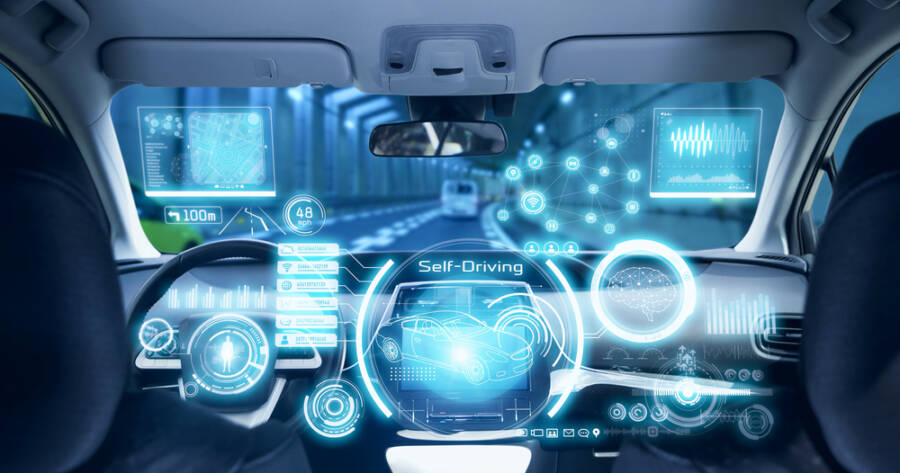Modern technology is transforming the landscape of driver assistance, introducing innovative features that enhance safety on the road. These advancements, ranging from adaptive cruise control to lane-keeping assistance, aim to minimize human error and prevent accidents. By examining the ways technology enhances driving safety, we can appreciate the potential benefits and understand how these systems contribute to a more secure driving experience.
The Rise of Advanced Driver-Assistance Systems (ADAS)
Advanced Driver-Assistance Systems (ADAS) are paving the way for safer driving by integrating technology to assist drivers with routine tasks. Adaptive cruise control, for instance, automatically adjusts speed to maintain a safe following distance from the vehicle ahead. This feature relieves drivers from constant speed adjustments, potentially reducing stress and fatigue on long journeys.
Lane-keeping assistance is another critical component of ADAS. By using cameras and sensors, the system can detect lane markings and provide steering input to prevent unintended lane departure. This technology helps drivers remain focused and aware, possibly decreasing the likelihood of collisions caused by drifting out of their lane.
Enhancing Visibility with Blind-Spot Monitoring
Blind-spot monitoring systems enhance driver awareness by alerting them to vehicles present in their blind spots. Sensors placed on the sides of the vehicle detect the presence of other cars and provide visual or auditory warnings. This functionality prevents lane-changing accidents and supports safe maneuvering in congested traffic.
The constant feedback offered by blind-spot monitoring encourages drivers to make informed decisions, improving overall situational awareness. This system complements traditional methods like checking mirrors, adding a valuable layer of safety that might make driving more relaxed and confident.
Automatic Emergency Braking (AEB): A Critical Safety Net
Automatic Emergency Braking (AEB) systems are designed to prevent potential collisions by detecting obstacles and applying brakes if the driver fails to react in time. Using cameras, radar, or lidar technology, AEB can identify pedestrians, vehicles, and other obstacles, providing visual and auditory alerts to the driver before intervention.
AEB offers a safety net, especially in urban settings where sudden stops are common. By acting as a backup, it reduces the severity of collisions and may save lives. The effectiveness of AEB systems continues to improve with advancements in technology, contributing to broader safety standards in modern vehicles.
Adaptive Headlights: Illuminating the Path Ahead
Adaptive headlights are designed to enhance nighttime visibility, automatically adjusting their direction based on the vehicle’s speed and steering angle. This intelligent feature ensures better illumination around curves and corners, providing drivers with a clearer view of potential hazards on the road.
By minimizing glare for oncoming traffic and adjusting brightness for varying conditions, adaptive headlights enhance driving comfort and safety. The added visibility offered by this technology reduces the risk of accidents, especially during adverse weather conditions or in poorly lit areas.
Driver Attention Monitoring: Staying Alert on the Road
Driver attention monitoring systems aim to detect signs of drowsiness or inattention, providing alerts to refocus the driver. Using cameras to track eye movement or sensors to monitor steering patterns, these systems identify potential lapses in concentration and encourage drivers to take breaks when needed.
This technology functions as a guardian, helping to prevent fatigue-related accidents that often occur on long, monotonous drives. By promoting regular rest and awareness, driver attention monitoring contributes to sustained focus and greater road safety.
Integrating Technology Seamlessly
As these technologies continue to evolve, seamless integration into vehicles is crucial for maximizing their effectiveness. User-friendly interfaces, intuitive design, and clear feedback signals ensure that drivers can easily interact with and rely on these systems. Automakers are focusing on creating a cohesive driving experience where technology complements rather than complicates the driving process.
The collaboration between tech developers and automakers fosters innovation and continuous improvement in driver assistance systems. By focusing on user experience and adaptability, these systems offer tools that enhance safety and comfort without overwhelming the driver.
Learn More Today!
Modern technology is redefining driver assistance by introducing innovative features that support safer driving. Components such as ADAS, blind-spot monitoring, and adaptive headlights enhance safety, offering additional layers of protection and awareness.
By understanding how these technologies work together, drivers can embrace the benefits of a more secure and comfortable driving experience. The ongoing development and integration of these systems continue to shape the future of driving, promoting a safer journey for all.

